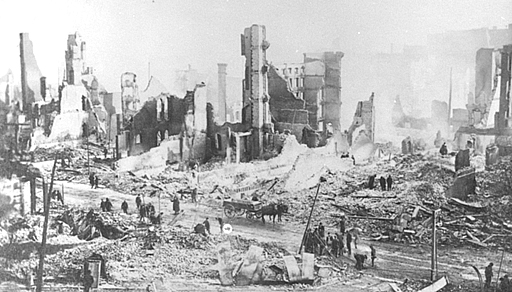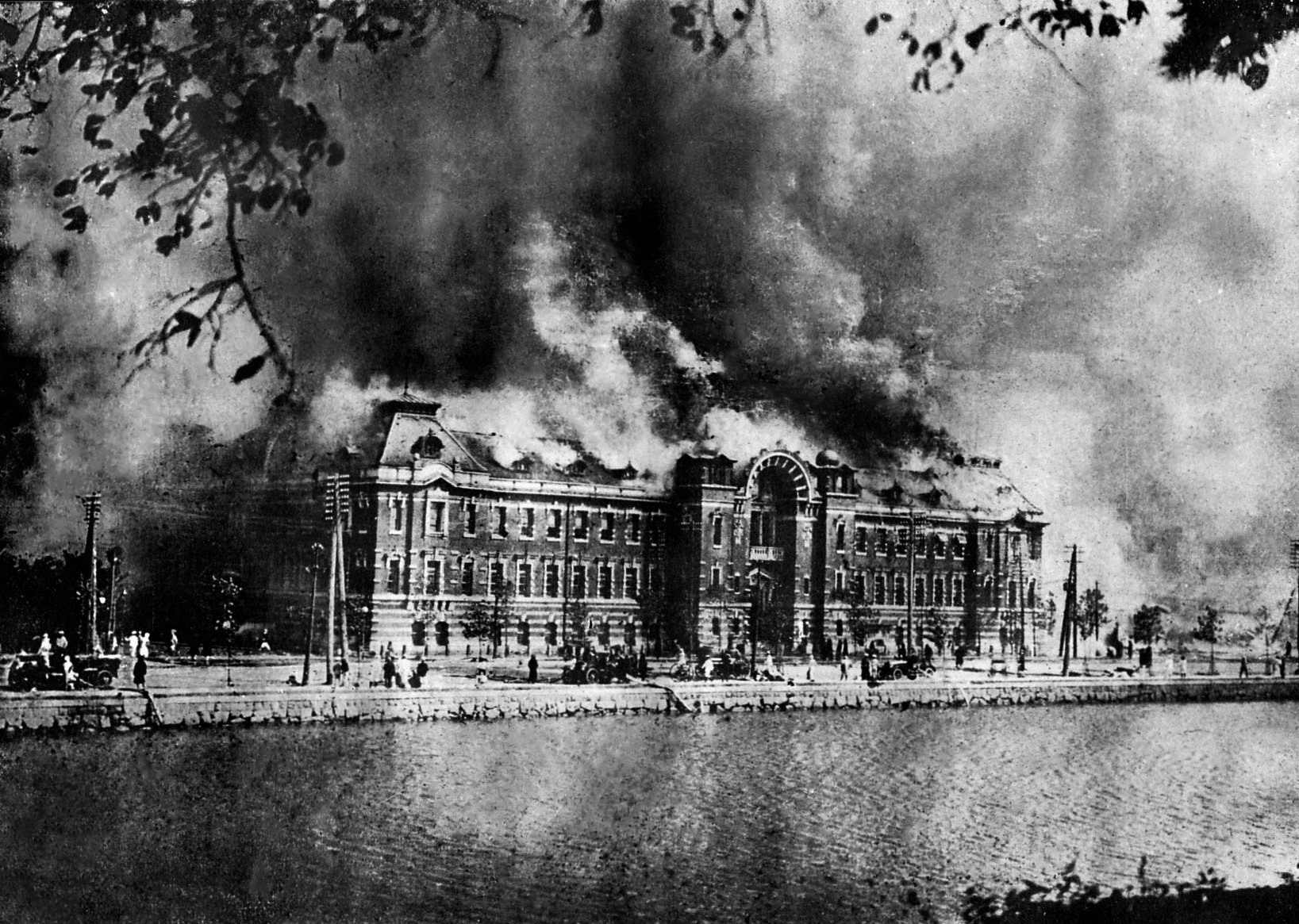|
Béla Kontuly
Béla Kontuly (1904 in Miskolc – 1983 in Budapest) was a Hungarian painter and art teacher. His life He completed his studies at the Academy of Fine Arts in Prague and the Academy of Fine Arts in Budapest, under István Réti and Andor Dudits. His works were already exhibited in the Eastern Slovakia Museum in Košice (Kassa) while he was still in college. From 1928 to 1930, he was a scholarship recipient of the Hungarian Academy in Rome together with his wife, Hajnalka Fuchs. In 1932, he organized a collection exhibition of his works at the Ernst Museum. In 1934, he joined the Munkácsy Céh Art Association. He created the frescoes of the staircase of the University of Szeged, the Hermina út chapel in Budapest, the Church of the Holy Spirit in Herminamező and the Catholic church in Komárom, and in 1939 the murals of the St. Anne's Church in Víziváros; the latter together with C. Pál Molnár. His significant works also include: the decoration of the Vác Cathedra ... [...More Info...] [...Related Items...] OR: [Wikipedia] [Google] [Baidu] |
Miskolc
Miskolc ( , ; ; Czech language, Czech and ; ; ; ) is a city in northeastern Hungary, known for its heavy industry. With a population of 161,265 as of 1 January 2014, Miskolc is the List of cities and towns in Hungary#Largest cities in Hungary, fourth largest city in Hungary (behind Budapest, Debrecen, and Szeged). It is also the county capital of Borsod-Abaúj-Zemplén and the Regions of Hungary, regional centre of Northern Hungary. Etymology The name derives from ''Miško'', Slavic languages, Slavic form of Michael (given name), Michael. ''Miškovec'' → ''Miskolc'' with the same development as ''Lipovec'' → ''Lipólc'', ''Lipóc''. The name is associated with the Miskolc (genus), Miskolc clan (also Miskóc or Myscouch, Slovak language, Slovak Miškovec, plural Miškovci) named after the settlement or vice versa. Earliest mentions are ''que nunc vocatur Miscoucy'' (around 1200), ''de Myschouch'' (1225), ''Ponyt de genere Myscouch'' (1230), ''in Miscovcy'' (1245). Geograp ... [...More Info...] [...Related Items...] OR: [Wikipedia] [Google] [Baidu] |
Vác Cathedral
The Cathedral of the Assumption of the Blessed Virgin and St Michael the Archangel (), commonly known as Vác Cathedral, is a religious building in the Catholic Church that serves as the cathedral of the Diocese of Vác. It is located in the city of Vác in Hungary. The diocese was founded in 1004 under Stephen I. The present church is the fifth structure on this site. The first cathedral was built in 1074, at the same site of the present, but was destroyed in the fourteenth century, during the invasions of the Mongols. During the Ottoman occupation of Hungary the last remnants of the wall collapsed. Some of the residue is still visible today. Only after the departure of the Ottomans was it possible to build a new church. Construction work began in 1761. Already in 1772 the cathedral was consecrated. The work continued until its completion in 1777. In 1944 during World War II a Soviet bomb hit the dome without actually detonating so a cool church parishioners remember what con ... [...More Info...] [...Related Items...] OR: [Wikipedia] [Google] [Baidu] |
People From Miskolc
The term "the people" refers to the public or common mass of people of a polity. As such it is a concept of human rights law, international law as well as constitutional law, particularly used for claims of popular sovereignty. In contrast, a people is any plurality of persons considered as a whole. Used in politics and law, the term "a people" refers to the collective or community of an ethnic group or nation. Concepts Legal Chapter One, Article One of the Charter of the United Nations states that "peoples" have the right to self-determination. Though the mere status as peoples and the right to self-determination, as for example in the case of Indigenous peoples (''peoples'', as in all groups of indigenous people, not merely all indigenous persons as in ''indigenous people''), does not automatically provide for independent sovereignty and therefore secession. Indeed, judge Ivor Jennings identified the inherent problems in the right of "peoples" to self-determination, as i ... [...More Info...] [...Related Items...] OR: [Wikipedia] [Google] [Baidu] |
1983 Deaths
1983 saw both the official beginning of the Internet and the first mobile cellular telephone call. Events January * January 1 – The migration of the ARPANET to Internet protocol suite, TCP/IP is officially completed (this is considered to be the beginning of the true Internet). * January 6 – Pope John Paul II appoints a bishop over the Czechoslovak exile community, which the ''Rudé právo'' newspaper calls a "provocation." This begins a year-long disagreement between the Czechoslovak Socialist Republic and the Vatican City, Vatican, leading to the eventual restoration of diplomatic relations between the two states. * January 14 – The head of Bangladesh's military dictatorship, Hussain Muhammad Ershad, announces his intentions to "turn Bangladesh into an Islamic state." * January 18 – United States Secretary of the Interior, U.S. Secretary of the Interior James G. Watt makes controversial remarks blaming poor living conditions on Indian reservation, Native American re ... [...More Info...] [...Related Items...] OR: [Wikipedia] [Google] [Baidu] |
1904 Births
Events January * January 7 – The distress signal ''CQD'' is established, only to be replaced 2 years later by ''SOS''. * January 8 – The Blackstone Library is dedicated, marking the beginning of the Chicago Public Library system. * January 12 – The Herero Wars in German South West Africa begin. * January 17 – Anton Chekhov's last play, ''The Cherry Orchard'' («Вишнëвый сад», ''Vishnevyi sad''), opens at the Moscow Art Theatre directed by Constantin Stanislavski, 6 month's before the author's death. * January 23 – The Ålesund fire destroys most buildings in the town of Ålesund, Norway, leaving about 10,000 people without shelter. * January 25 – Halford Mackinder presents a paper on "The Geographical Pivot of History" to the Royal Geographical Society of London in which he formulates the Heartland Theory, originating the study of geopolitics. February * February 7 – The Great Baltimore Fire in Baltimore, Maryland, destroys over 1,500 build ... [...More Info...] [...Related Items...] OR: [Wikipedia] [Google] [Baidu] |
Tokyo
Tokyo, officially the Tokyo Metropolis, is the capital of Japan, capital and List of cities in Japan, most populous city in Japan. With a population of over 14 million in the city proper in 2023, it is List of largest cities, one of the most populous urban areas in the world. The Greater Tokyo Area, which includes Tokyo and parts of six neighboring Prefectures of Japan, prefectures, is the most populous metropolitan area in the world, with 41 million residents . Lying at the head of Tokyo Bay, Tokyo is part of the Kantō region, on the central coast of Honshu, Japan's largest island. It is Japan's economic center and the seat of the Government of Japan, Japanese government and the Emperor of Japan. The Tokyo Metropolitan Government administers Tokyo's central Special wards of Tokyo, 23 special wards, which formerly made up Tokyo City; various commuter towns and suburbs in Western Tokyo, its western area; and two outlying island chains, the Tokyo Islands. Although most of the w ... [...More Info...] [...Related Items...] OR: [Wikipedia] [Google] [Baidu] |
Székesfehérvár
Székesfehérvár (; ; ; ; Serbian language, Serbian: ''Стони Београд''; ), known colloquially as Fehérvár (), is a city in central Hungary, and the country's ninth-largest city. It is the Regions of Hungary, regional capital of Central Transdanubia, and the centre of Fejér county, Fejér County and Székesfehérvár District. The area is an important rail and road junction between Lake Balaton and Lake Velence. Székesfehérvár, a royal residence (), as capital of the Kingdom of Hungary, held a central role in the Middle Ages. As required by the Doctrine of the Holy Crown, the first kings of Hungary were crowned and buried here. Significant trade routes led to the Balkans and Italy, and to Buda and Vienna. Historically the city has come under Ottoman Empire, Ottoman and Habsburg monarchy, Habsburg control, and was known in many languages by translations of "white castle" – , , etc. History Pre-Hungarian The place has been inhabited since the 5th century ... [...More Info...] [...Related Items...] OR: [Wikipedia] [Google] [Baidu] |



